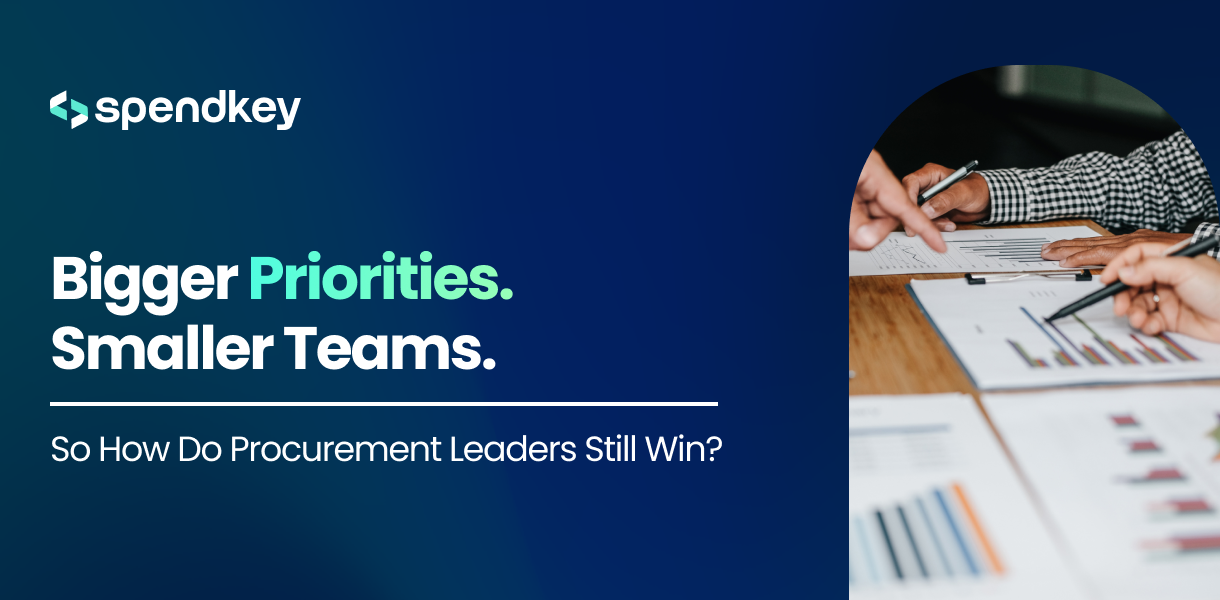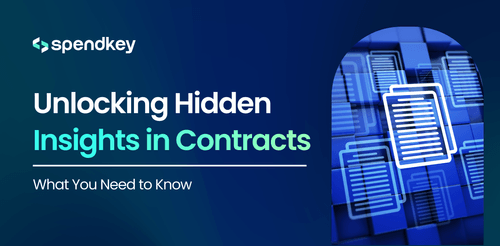How Data-Driven Procurement Teams Win — Even With Smaller Teams


This guide will teach you how to use your spend data to transform your business for profitable growth.

Download our free Low Risk Low Value (LVLR® ) framework to get complete spend visibility and achieve over 20% reduction in costs.

Download our Category Management Optimiser Checklist that has helped business leaders monitor and improve the effectiveness of their existing spend categories and subcategories enabling them to add millions to their bottom line.

Download our Transforming Finance With Artificial Intelligence (AI) Guide now and explore how AI can help you improve efficiency, build agility and make optimal strategic business decisions.

Most procurement teams today share the same set of goals - cut costs, improve cash flow, reduce supply chain risks, manage contracts more efficiently, drive operational efficiency and agility, drive digital transformation and meet ESG targets - all while operating with leaner budgets and smaller teams.
It’s not easy for procurement teams to juggle all these priorities while operating with leaner budgets and small team.
So, here’s the critical question: Why are some organisations consistently hitting these priorities or confident to do so while others struggle, even when they have similar suppliers, budgets, and team sizes?
Any guesses?
Is it because they have better negotiation skills, more dashboards, bigger teams, or high-end technology investments?
Sure, those things can help but they are not the real enabler.
The real driver of procurement success is the quality of your data.
That’s what sets up your best negotiations, keeps costs in check, and makes supplier risks manageable.
Even the most sophisticated ERP systems or AI tools will fail to deliver true value if they’re running on messy, fragmented, or incomplete data.
Most procurement teams don’t lack data. They are overwhelmed with data — scattered across multiple systems - ERPs, P2P platforms, spreadsheets, emails, and shared drives.
But this data is often unstructured, inconsistent, and incomplete.
Procurement teams typically use whatever data they can access, run analyses, and produce reports and dashboards that are meant to guide decisions.
And that’s where the real problems start. When decisions are made on bad data:
Meanwhile, the teams that have taken the time to lay their data foundation right have clear visibility and confidence in every decision and action they take.
Having unified and clean data sets helps teams gain accurate insights into their spend, contracts, and suppliers — and make more confident decisions and smarter moves. They can tap into rebate savings and align tighter payment terms with suppliers, improving working capital.
Clean data is the foundation for everything procurement wants to do next — whether it’s creating smarter category strategies, implementing AI solutions that uncover hidden savings or deploying autonomous AI agents that scan thousands of transactions and flag exactly what to fix, why it matters, and how to act.
Data transformation isn’t easy — and it’s not as simple as it sounds.
It involves several critical steps that need to be followed to ensure that you have 100% good quality data.
It starts with data unification — consolidating all your data, whether it’s spend, supplier, or contract data, in one place.
The next step is data cleansing and enrichment - fixing duplicates, correcting inconsistent fields, mapping relationships like parent-child suppliers, and enriching your data with third-party sources.
Another key step before you even begin meaningful analysis is categorisation. It starts with grouping transactions into categories and subcategories, so you can clearly see where your spend is going. But it also extends to your suppliers and contracts, helping you build smarter strategies for each area, drive more savings, and keep risks under control.
Doing all this manually is slow, painful, and can be prone to mistakes.
Most procurement teams don’t have the resources to keep cleaning, mapping, and categorising thousands of records — and that’s why many are now turning to automated, AI-powered spend analytics solutions that start by getting the data right.
Once your data is clean, unified, and properly structured, it becomes your most valuable strategic asset.
That’s the real enabler behind why some procurement teams keep winning.
They’re building every negotiation strategy, sourcing plan, and supplier decision on a foundation of solid, trustworthy data.
Even the smartest AI solutions or the most advanced dashboards will fail to deliver real impact if they’re operating on bad data.
That’s exactly where we start at Spendkey — helping you unify, clean, and enrich your data so every decision is sharper, faster, and delivers more impact.
We help procurement teams automatically clean, unify, enrich, and categorise their spend, supplier, and contract data — powered by our AI platform and network of agents.
Because once your data is right, every decision that follows becomes sharper, faster, and delivers greater impact.



Why are some procurement teams consistently hitting their goals while others struggle — even with the same suppliers, budgets, and team sizes?

Traditionally, reviewing contracts meant reading through them line by line, an approach that was both labor-intensive and time-consuming. By the time teams extracted insights from numerous contracts, the information was often outdated or not actionable.

Procurement is evolving, and its role as a value generator within businesses is more crucial than ever. For procurement leaders, balancing cost management with extending influence into strategic areas is no easy task, and the pressure to deliver is immense.